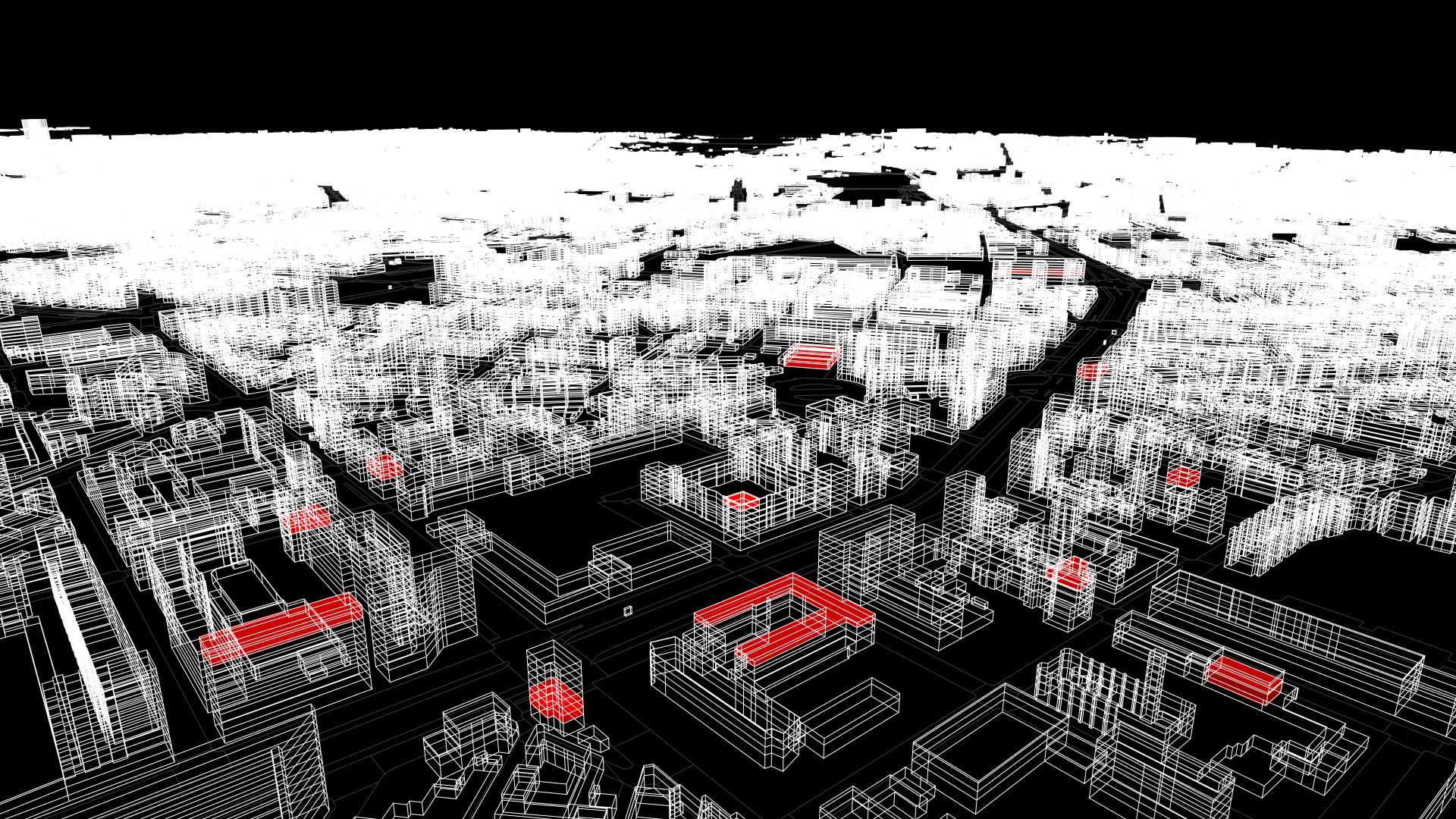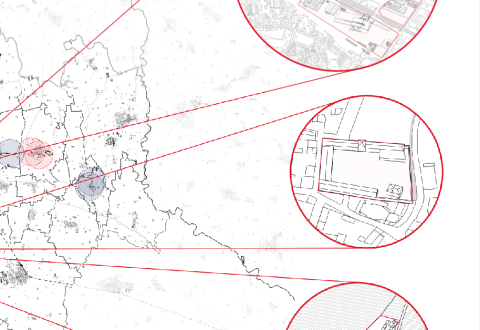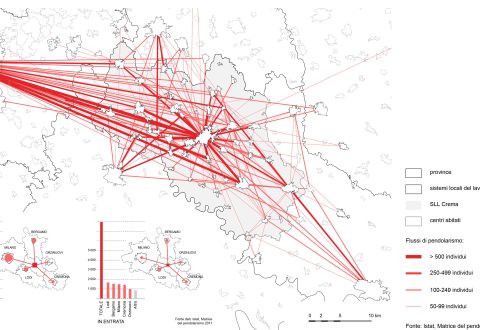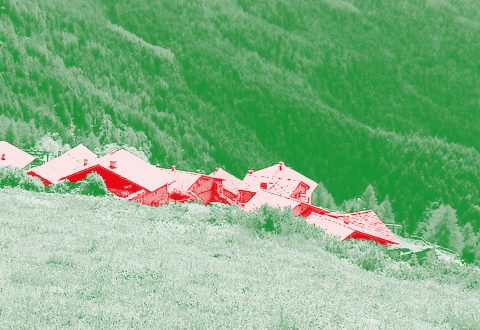Triggering Potentials
The enhancement of urban cultural heritage as a strategy to reactivate city regeneration processes
In a context of widespread and heterogeneous availability of transformable assets in the urban fabric, not just property owned by the municipality, Future Urban Legacy Lab has proposed a paradigm shift. It integrates the analysis of the availability for use of the municipal built heritage with a reflection on the intensity of use, the dynamics of transformation and the potential for transition. The phenomenon of availability is understood as a set of dynamic relationships between components in the built space of the city (the buildings, the morphology of the blocks and their aggregation), and not as isolated episodes. This approach allows municipal properties to be placed within the broader framework of the availability of assets and spaces for use in Turin, and to enrich the interpretation by also examining other urban phenomena.
Through this framework, the transformation potential of the assets is defined by identifying various indicators, capable of informing evaluations and intervention strategies applicable to assets of different types and consistencies, going beyond the scope of the initial investigations performed.
The interest of the research team was to develop reasoning on the economics of intensity of use and the risk profile associated with transformation potential.
Year
2019-2020
Referente del contratto
Responsabili scientifici
Gruppo di ricerca
Tags
#NonPerformingLegacies #TransformativeUrbanism
Type
Research project

1 A multi-disciplinary approach
The interdepartmental centre of the Polytechnic University of Turin, FULL (Future Urban Legacy Lab), through the Department of Architecture and Design, proposes integrating the analysis of the availability for use of the municipal built heritage with a reflection on the intensity of use, the dynamics of transformation and the potential for transition.
Turin is a laboratory that has produced experiences capable of providing an overview of these issues, such as TorinoAtlas and the editions of the Giorgio Rota report, through specific and sector-specific studies.
In a context of widespread and heterogeneous availability of transformable assets in the urban fabric, not just property owned by the municipality, FULL proposes a paradigm shift. The phenomenon of availability is understood as a set of dynamic relationships between components in the built space of the city (the buildings, the morphology of the blocks and their aggregation), and not as isolated episodes. This approach allows municipal properties to be placed within the broader framework of the availability of assets and spaces for use in Turin, and to enrich the interpretation by also examining other urban phenomena.
Through this framework, the transformation potential of the assets may be defined by identifying various indicators, capable of informing evaluations and intervention strategies applicable to assets of different types and consistencies, going beyond the scope of individual case studies.
The interest of the research team is to develop reasoning on the economics of intensity of use and the risk profile associated with transformation potential.
Regeneration processes may fail or not be triggered despite the mobilisation of resources. We believe that regeneration should not be prescribed as a one-size-fits-all solution to all available uses of the built heritage.
Failure is particularly helpful in codifying the potential, allowing the reasons to be traced to the intrinsic characteristics of the asset or the management conditions.
In analysing built heritage, FULL therefore refers to a specific economic assessment, required by the call, mapping the ‘real options’, i.e. the possibilities for undertaking ‘risk’ actions associated with heritage, as well as for deferring them pending more predictable contextual conditions or renouncing them completely.
The method proposed by FULL is based on a transdisciplinary approach that envisages a continuous and integrated comparison between applied techniques and economic, management and design skills, restoring urban phenomena through the analysis of large quantities of data and targeted focus, in order to reflect on and operate within the city.
2 The method: measure, recognise, value
FULL is developing projects relevant to the issues raised by the call: preparing strategies for rehabilitating underused cultural sites identifying their potential (for the Piedmont Region); exploring the relationship between the distribution of commercial activities and urban form (with the Chamber of Commerce); reorganising spatialised data on Turin and prioritising codes and regulations for the purpose of regeneration (for the City of Turin – support to the drafting of PRG variant).
Through experiments in the field of regeneration of polluted sites and by examining urban phenomena, FULL is also developing technical platforms for the integration and interoperability of data on the city, functional to a context of transformation of the existing fabric.
Based on the experience gained, FULL proposes a working method that is developed through:
– Measuring and representing availability starting from the municipal heritage by spatialising the phenomenon and relating it to other dynamics of use of the built environment.
– Recognising asset types through classification according to distribution, construction and morphology categories.
– Describing the potential of available properties starting from the aggregation of common possibilities and critical issues, in order to propose enhancement strategies.
2.1. Measuring and representing available properties
2.1.1. Spatialising data
In order to spatially represent the phenomenon of availability for use, FULL proposes an integrated system between the data related to municipal properties (which will be made available by the contracting station), the open data of the Municipality of Turin and the Metropolitan City (including Geoportal, Museo Torino, OICT, ISTAT and Smartdatanet-Yucca), and the new spatial data processed by the interdepartmental centre, thus enhancing the existing wealth of knowledge through:
1 Fine-grained representations that can add significant detail to existing analyses.
2 New mappings of phenomena that are still poorly mapped.
3 Representations that bring out latent or unexpected phenomena by relating spatialised databases.
2.1.2. Identifying intensity of use
FULL proposes extending the concept of ‘availability’ to under-utilised properties. Through indicators built on intensity of use, it will be possible to map not only disused properties, but also the degree of use where properties are used.
In order to investigate heterogeneous municipal properties, it is proposed to identify specific indicators of under-use by functions/types of assets, starting with data on municipal properties (e.g. intensity of use of schools compared to demographic data and other indicators to be agreed upon). Intensity of use makes it possible to consider all municipal properties, even those that are only partially used, in the definition of development strategies.
2.1.3. Integrating geographies of availability
In order to interpret the potential of the available municipal properties, FULL proposes integrating the analysis with a geography of data and sources related to other types of available properties (privately-owned or owned by public persons other than the administration). The interdepartmental centre is developing projects that can build indicators of availability of use for specific categories of assets. By cross-referencing data on active licences with information on buildings (surface, use, estimated population) and their morphological characteristics, FULL is, for example, mapping commercial spaces not in use in Turin. The interdepartmental centre is also developing Airbnb data in Turin in order to allow the examination of phenomena of residential property use otherwise invisible to traditional demographic analyses.
2.1.4. Verifying results through control operations
In order to verify and examine the results of measurements and mappings described so far, FULL proposes experimenting with integrating detailed localised data with focus and tuning operations, by:
– Analysing changes in urban morphology over time by comparing 3D aerial data collected at successive times, and corresponding digital surface models (DSM).
– Integrating localised data to track the actual attendance at a location (e.g. GPS open tracking of users, telephone cells etc.).
– Aggregating co-generated inputs combined with geo-referenced data through crowdmapping and mobile mapping tools.



